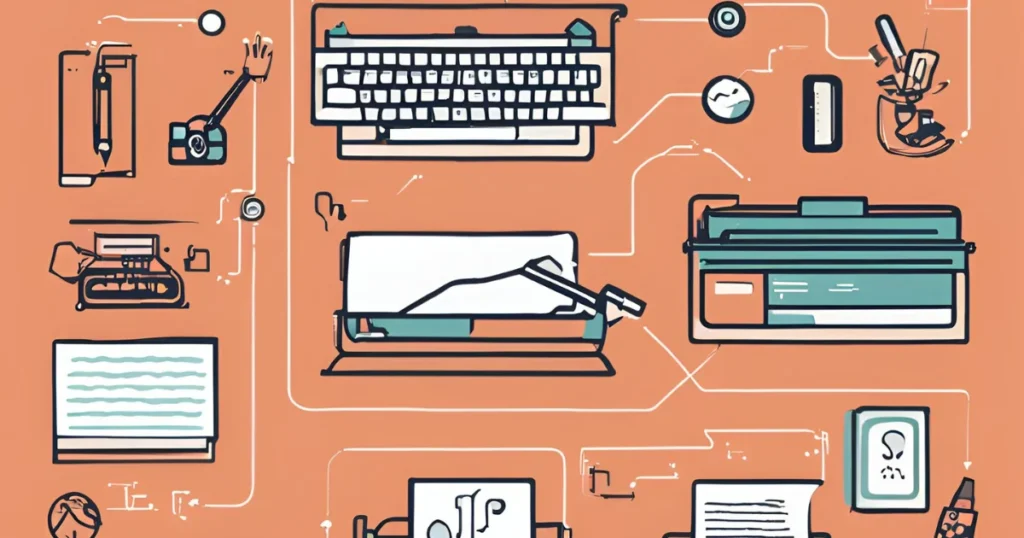Turnitin detects ChatGPT-generated content through advanced natural language processing algorithms that analyze linguistic patterns, structure, and originality in the submitted text.
This blog post aims to dissect how Turnitin, a leader in plagiarism detection, has adapted to the rise of AI-generated content, ensuring that educational institutions maintain integrity while navigating this new frontier.
Understanding Turnitin
What is Turnitin?

Founded in 1998, Turnitin is a widely used tool for plagiarism detection that helps educational institutions uphold academic integrity. It serves both educators and students by comparing submitted work against a vast database of online content and academic papers.
Over the years, Turnitin has evolved from merely identifying plagiarism to recognizing and flagging AI-generated content.
How Turnitin Works
Turnitin employs a sophisticated algorithm to compare student submissions against an extensive database, which includes web content, academic publications, and even previous student submissions.
When a student’s work is submitted, Turnitin generates a similarity report, indicating the percentage of text that matches existing sources.
This feature is essential for educators in assessing the originality of student work.
The Rise of AI Writing Tools

Popularity of ChatGPT
With the rise of AI technologies, tools like ChatGPT have surged in popularity, providing students with a quick and easy way to generate content. While these tools can enhance learning, they can also enable unethical practices if misused.
Challenges for Educators
Educators face significant challenges in distinguishing between student-generated and AI-generated work. The human-like writing quality of ChatGPT can make it challenging to identify authorship. Before Turnitin’s updates, many instructors relied on manual verification methods, such as oral exams and scrutiny of writing styles.
How Turnitin Detects ChatGPT
Detection Mechanism
Turnitin has implemented advanced natural language processing (NLP) models that can identify telltale signs of AI-generated text. This includes analyzing various factors such as:
- Word Choice: AI-generated content often exhibits less variability in vocabulary compared to human writing.
- Sentence Structure: AI tends to follow predictable grammatical patterns, lacking the syntactic diversity found in natural writing.
- Coherence and Fluency: Turnitin’s algorithms evaluate the flow and logical progression of ideas, as AI-generated essays can sometimes lack continuity.
Key Indicators of AI Writing
Turnitin’s AI detection system focuses on several linguistic characteristics to determine the likelihood that a text is machine-generated:
- Originality and Randomness: Human writing tends to be more original and varied, while AI-generated text often relies on repetitive phrases from its training data.
- Topic Focus: AI writing tends to adhere closely to prompts, exhibiting few logical leaps, which can be indicative of machine-generated content.
Accuracy of Detection
Turnitin claims an impressive 98% accuracy in detecting AI-generated content, outperforming many other plagiarism detection tools. This high level of accuracy is critical in maintaining academic standards.
The Role of AI in Academic Writing
Ethical Considerations
Using AI tools in academic settings poses ethical dilemmas. While these tools can support learning, they must be used responsibly. Students should understand the implications of relying solely on AI for assignments.
Educational Benefits
When utilized ethically, AI tools like ChatGPT can enhance student learning.
For instance, students can leverage these technologies for idea generation and improving their writing style, leading to more polished and well-structured submissions.
Limitations of Turnitin’s Detection
Evasion Tactics by Students
Despite Turnitin’s advanced capabilities, some students may attempt to evade detection. Tactics include heavily editing AI-generated content to introduce variability and using multiple AI tools in conjunction to create a composite text. However, such methods often result in lower-quality essays that lack coherence and depth.
Ongoing Challenges
The landscape of AI writing is constantly evolving, necessitating continual updates and enhancements to detection tools. As new models emerge, the challenge of distinguishing between human and AI-generated text will only increase.
Future of AI Detection
The Arms Race Between AI and Detection Tools
As generative AI models become more sophisticated, the need for effective detection mechanisms grows. Turnitin and similar tools must adapt to stay ahead in this evolving landscape.
Recommendations for Educators
To navigate this complex issue, educators should:
- Familiarize themselves with Turnitin’s AI detection capabilities and limitations.
- Frame assignments that emphasize critical thinking and analysis over mere fact collection.
- Incorporate various assessment methods, such as multiple drafts and oral presentations, to evaluate student understanding beyond written submissions.
Conclusion
As AI technologies continue to evolve, Turnitin plays a crucial role in safeguarding academic integrity.
By understanding how Turnitin detects AI-generated content, educators can better equip themselves to foster a culture of responsible AI use in education.
As we embrace the benefits of AI tools like ChatGPT, it is essential to balance innovation with the ethical principles that underpin academia.





